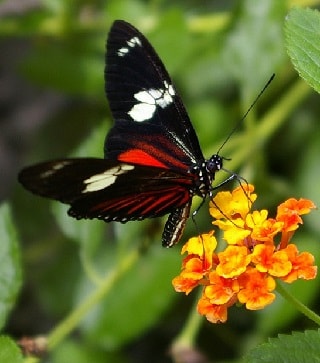Introduction
Insects are by far the most abundant animals on earth, in fact they account for nearly ninety percent of all living things on the planet. Experts estimate there may be thirty million different species of insects on the earth; the majority of which are found in tropical rainforest. There are countless species of insects living in the world's rainforest. These tropical rainforest animals play an important role in maintaining the health of the forest. The rapid destruction of the world's tropical rainforest is resulting in the extinction of many insect species. Every day several insect species become extinct.
Click here for a great selection of Amazon.com
books about rainforest insects.
On this page is a list of interesting facts about tropical rainforest insects. This information includes what insects live in the rainforest biome, how they help the rainforest, and why the extinction of insect species hurts the rainforest.
Tropical Rainforest Insects General Facts
- Rainforest are known for the diversity of animal life they support. Insects are the most diverse animals in the rainforest, there are by far more different species of insects in the rainforest than any other type of animal.
- Tropical rainforest are teeming with all sorts of amazing insects; some colorful, some scary, and some very strange looking. Butterflies, ants, beetles, stick insects, and many more types of insects live in the tropics.
- Butterflies are perhaps the most beautiful insects in the rainforest. A few examples of butterfly species that live there are the clear-wing butterfly (Pseudohaeterea hypaesia), owl butterfly (Caligo idomeneus), leaf-wing butterfly (family Nymphalidae), and the blue morpho butterfly (family Morphidae).
- Numerous species of ants make their habitat the tropical rainforest. One of the most famous species is the army ant (Eciton burchelli) of the Amazon Rainforest, which often can be found living in colonies of over 600,000 ants.
- The greatest number of species of insects in the tropical rainforest are found high up in the canopy layer.
- The more plants found in an area of the rainforest, the more insects there will be. This is because an interdependent relationship exist between insects and plants. Many insects eat plants, their excrement makes its way back into the soil which provides nutrients for plant grow. Insects also pollinate plants insuring their survival.
- Many animals in the world's tropical rainforest are going extinct, mostly due to deforestation, insects are no exception. Many species that may live on just a few square acres of rainforest are driven to extinction even before experts have identified and documented them.
Why Insects are Important to the Tropical Rainforest
Below is a list of why insects are important to the health of the earth's tropical rainforests. This information makes it clear how the rapid extinction of insect species that is occurring can have severe consequences for these forest.- Food Source - Insects are an important food source for many animals in the rainforest; numerous species of birds, lizards, frogs, bats, and other animals eat them to survive.
- Soil Fertility - many insects eat leaves, bark and other parts of plants. These insects excrement is deposited into the soil with the organic matter already significantly broken down for micro-organisms that decompose the organic matter even further supplying nutrients into the soil for plant growth.
- Pollination - Plants are an important part of the rainforest, and insects help plants reproduce by transporting pollen from one plant to another. Many plants produce nectar which attract numerous insects including butterflies, flies, and beetles. These insects drink the nectar and eat the plants pollen, carrying the pollen to other plants and pollinating them. Many plant species can only be pollinated successfully by one or two species of insects; eliminate the insect and the dependent plant species will also die out.
- Clear Dead and Weak Trees - Some insects, such as the bark beetle, colonize dying trees and kill them due to their feeding. The benefits are that nutrients from the trees bark is returned to the soil, room is made for new trees and plants, and a little more sunlight may be made available for forest layers below the canopy.
